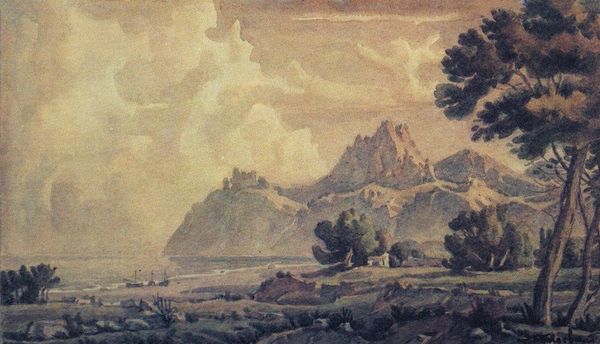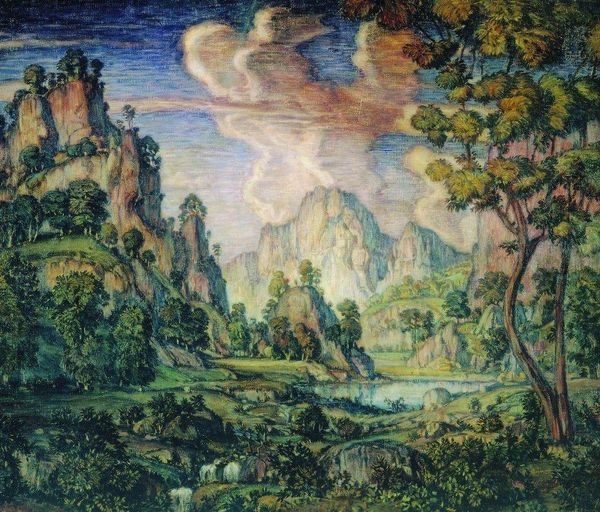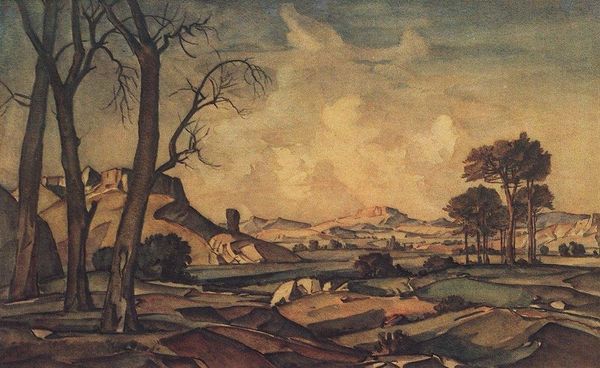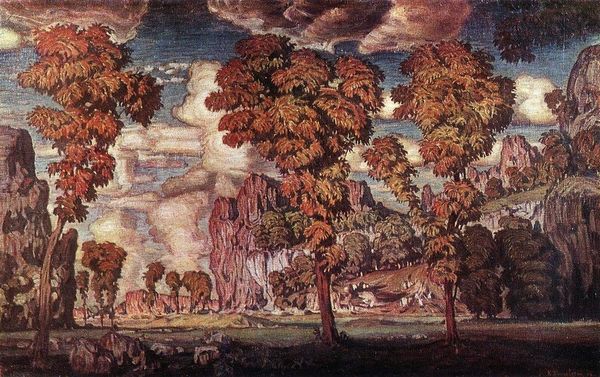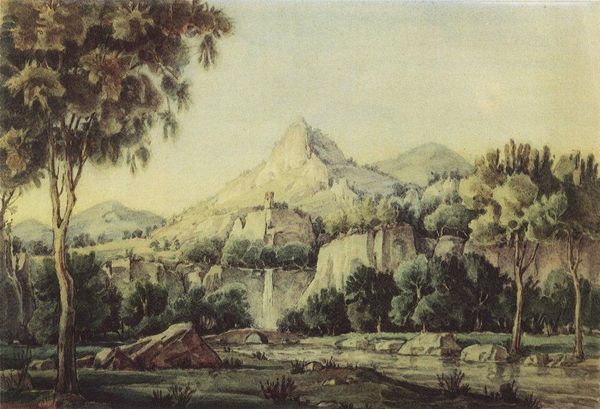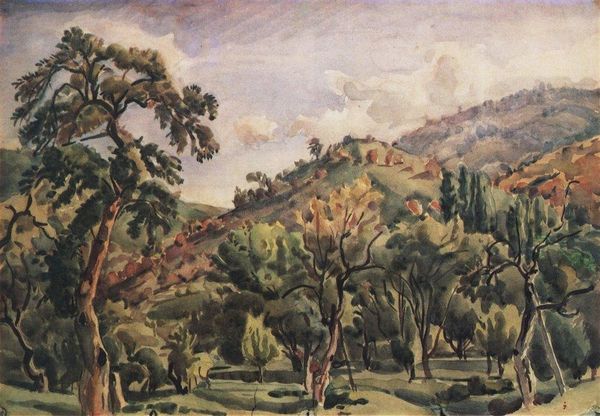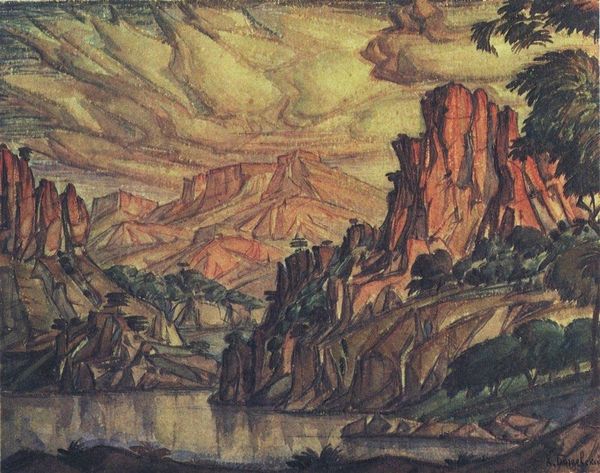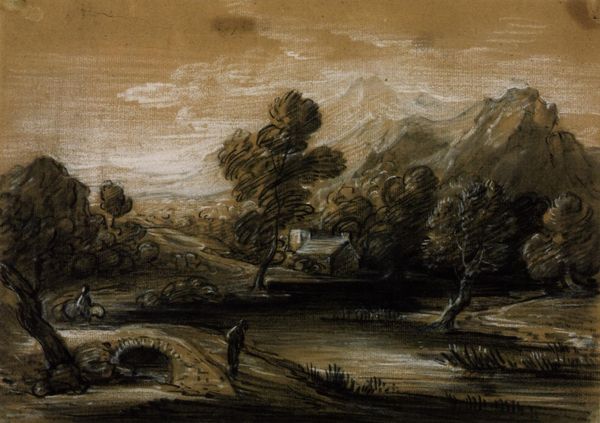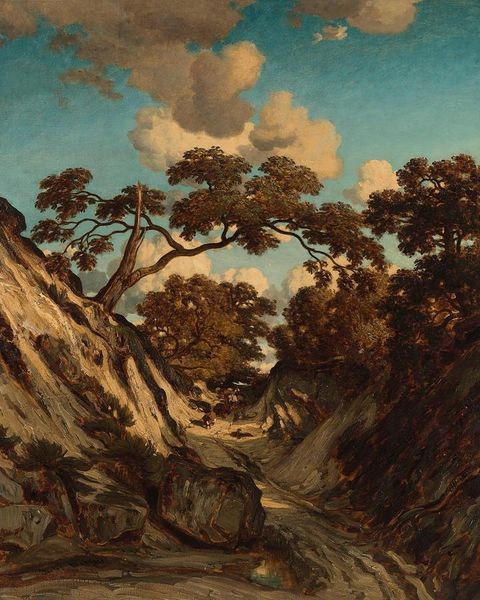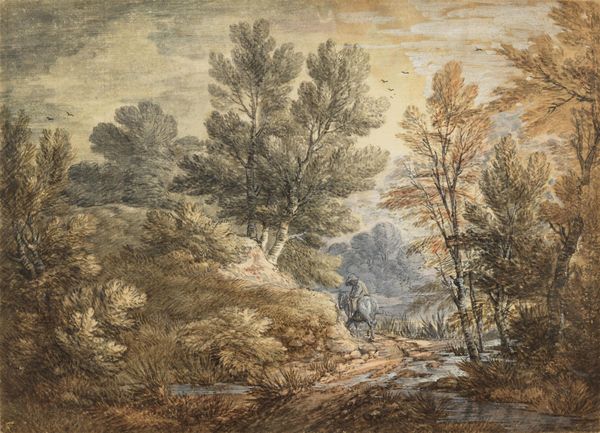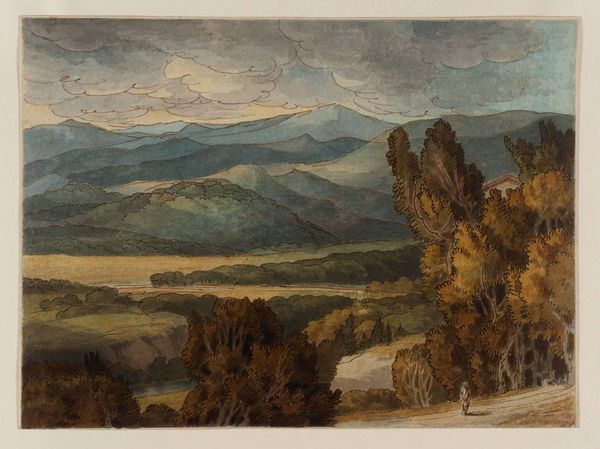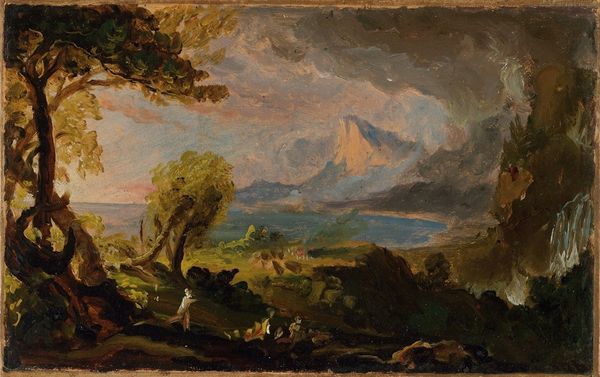
Copyright: Public domain
Curator: Immediately, I’m drawn to the sheer theatricality of this composition, a dramatic tension between the monumental mountainscape on the right and the robust tree dominating the left. Editor: This piece is entitled "Romantic Landscape" by Konstantin Bogaevsky, created in 1935. Bogaevsky, working in the early to mid-20th century, produced works often tinged with symbolism. What sociopolitical elements would contribute to its romantic style? Curator: Romanticism often surfaces during times of political and social upheaval. The rise of totalitarian regimes in Europe certainly provided fertile ground for escapist art. In its formal structure, one might notice the strategic deployment of color to establish hierarchy— the dominance of earth tones suggesting solidity against the airy blues of the sky. Editor: The choice of tempera and gouache further supports your argument. These media offer a matte finish, evoking a sense of nostalgia. Given the historical context, one wonders if it offered solace from turbulent times. Curator: Precisely! The brushstrokes, particularly in the foliage and the rock formations, contribute to the sense of movement. Do these swirling lines offer an entry into the sublimity of nature or convey disquiet? Editor: Interesting, that it suggests a tension; rather than simply nature for nature's sake, it is nature imbued with foreboding, in contrast to idealized landscape. I appreciate the way you decode that dualism by pointing at its brushstrokes. Curator: I'd also point out the compositional balance, or lack thereof, with the tree as the focal point set against this grand mountain range. It is a deliberate attempt to upset balance. Editor: Considering this further, this might be an illustration of mankind's smallness against this force of nature. The piece captures more than pretty scenery; it captures a particular mood characteristic of a turbulent period in European history. Curator: Reflecting on it further, it's this dialectic between the surface's aesthetic pleasure and a certain foreboding lurking beneath that truly captivates. Editor: Agreed, and what is romantic art other than its power to simultaneously seduce and disturb? It's a potent combination indeed.
Comments
No comments
Be the first to comment and join the conversation on the ultimate creative platform.
